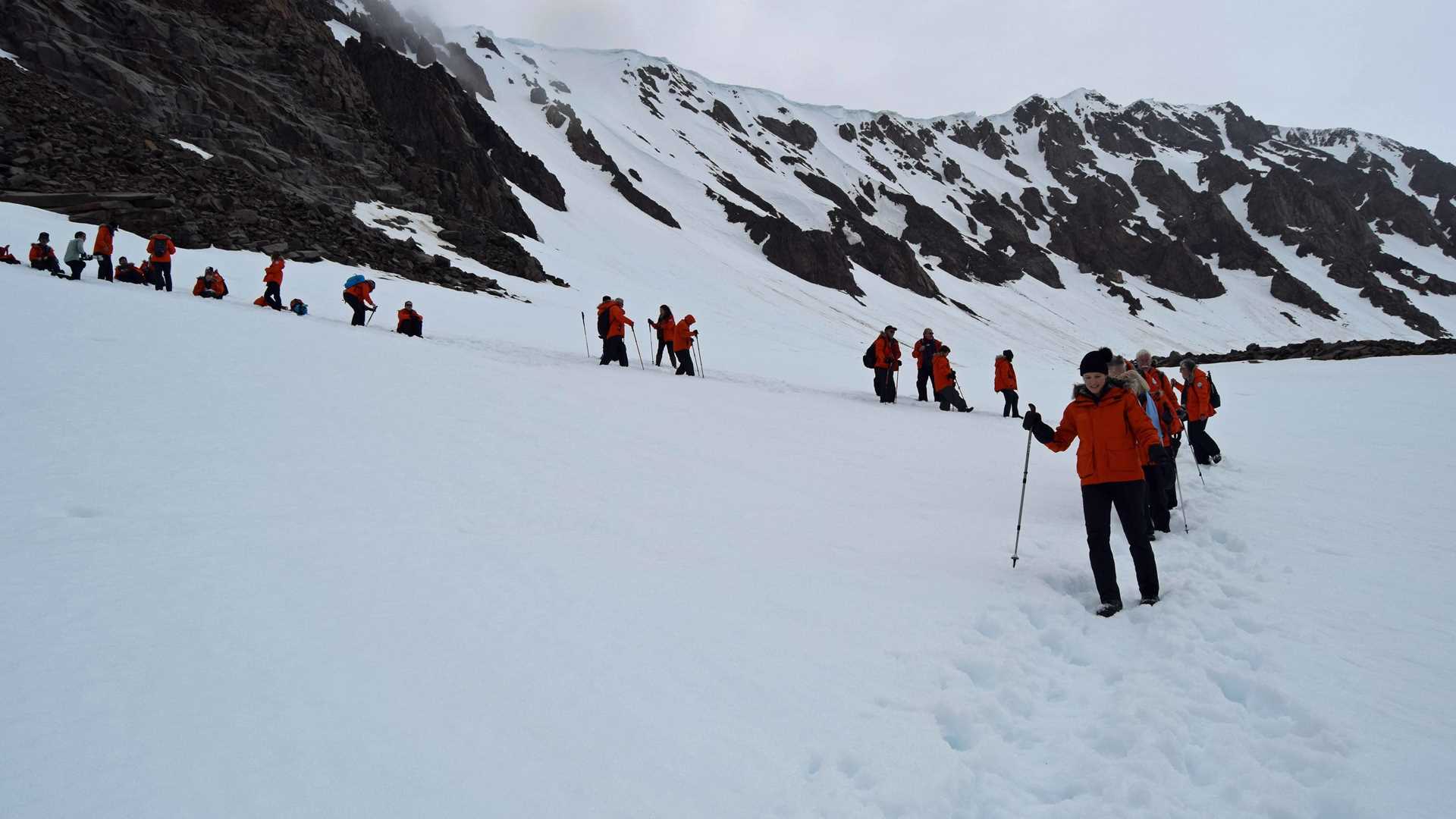What a day to toast to, at 68 degrees South, far beyond the Antarctic Circle. The day began mostly overcast, while watching Adelie penguins march to the sea. It ended under blue skies as we watched the highly active Neny glacier calve into the sea. Several guests celebrated their 7th continent, and everyone celebrated the remarkably pristine beauty that surrounded us. Indeed, today was a day that will dance through our hearts and minds for a long time to come.
We began our day at Red Rocks Ridge, the southernmost landing site of any tourist vessel on the Antarctic Peninsula. Intrepid hikers helped explore a path alongside an actively calving glacier face, where we enjoyed our “summit” view overlooking freshly calved icebergs, Adelie penguins, and the occasional Weddell seal surfacing below.
The afternoon took us a bit north, where we were the first ship of the season to visit Stonington Island. Here we greeted several Base workers who happily clambered aboard, answering our many questions about life on a remote Antarctic island (and eager awaiting their soon-to-be-had showers!).
Stonington Island is a small island a few hundred yards in front of the actively calving Neny Glacier face. Until very recently, this glacier connected the island to the mainland; just in recent decades, Neny glacier receded so much as to expose Stonington as an actual island. We watched in awe as the glacier birthed icebergs. It’s both a beautiful and emotional site to witness: thunderous booms from within the glacier singing Antarctica’s symphony, while also watching Antarctica’s icy biome freefall into the sea.
The sun came out and we explored the historic remnants of the base. The original base was built in 1939, originally as a US base until the Ronne Antarctic Research Expedition of 1947. It was a base that the first two women overwintered in Antarctica – Edith Ronne and Jenny Darlington. In the 1960s, Stonington was a primary access point for the peninsula, and at one point was home to 120 sled dogs as well as an aircraft runway. In 1972, the original base was burnt down, and eventually the station was closed for good in 1975.









